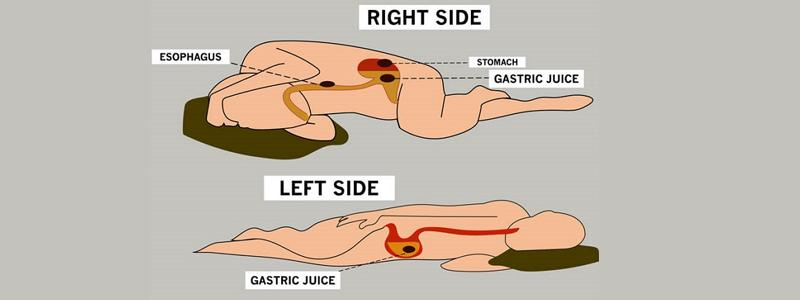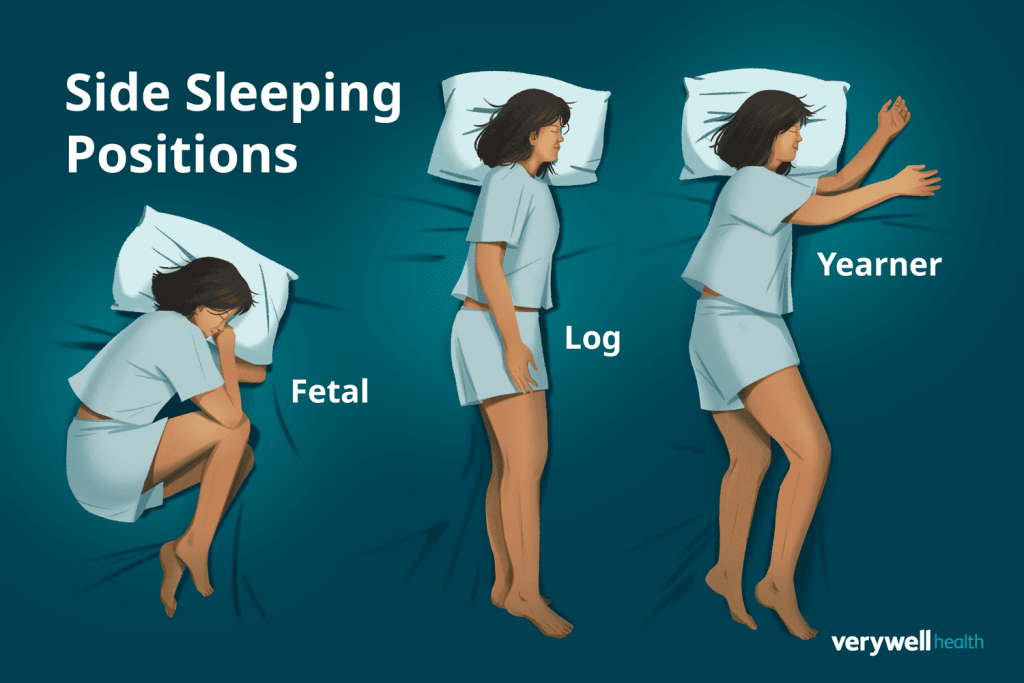Did you know that sleeping on your left side could improve your digestion by up to 20%? This simple habit, rooted in science and traditional practices like Ayurveda, can transform your health. From better heart function to reduced acid reflux, your sleep position matters more than you think. In this guide, we’ll explore seven compelling reasons to choose the left side of the bed, backed by research and real-life examples. You’ll discover practical tips to make this change comfortable, avoid common mistakes, and maximize benefits for your body. Whether you’re seeking better sleep or overall wellness, this article offers actionable insights to enhance your nightly routine. Ready to unlock the power of left-side sleeping? Let’s dive into why it could be your health’s secret weapon!

Why Left-Side Sleeping Benefits Your Body
Sleeping on your left side aligns with your body’s natural anatomy, supporting digestion, circulation, and heart health. The stomach and heart are positioned to function optimally in this posture, while gravity aids lymphatic drainage and reduces pressure on vital organs. Studies, like one from 2015 in the Journal of Clinical Gastroenterology, suggest left-side sleeping can reduce acid reflux symptoms significantly.
For example, Sarah, a 38-year-old teacher, switched to left-side sleeping to ease heartburn. After a month, she reported fewer nighttime symptoms and better sleep quality. However, proper alignment and comfort are key to avoiding strain. Let’s explore the specific benefits and how to adopt this habit safely.
Improves Digestion and Reduces Acid Reflux
Sleeping on your left side keeps the stomach below the esophagus, using gravity to prevent acid from flowing back, which reduces heartburn and GERD symptoms. This position also supports the natural curve of the digestive tract, aiding food movement.
How to Maximize Benefits:
- Avoid heavy meals 2-3 hours before bed to reduce acid production.
- Use a firm pillow to keep your head slightly elevated.
- Sleep on your left side consistently for 2-4 weeks to notice results.
Case Study: John’s Relief
John, a 45-year-old accountant, struggled with nighttime acid reflux. After switching to left-side sleeping and adjusting his dinner routine, he reported 80% less heartburn within three weeks.
Precaution: If you have existing digestive issues, consult a doctor to ensure this position suits you.

| Benefits of Left-Side Sleeping |
|---|
| Benefit |
| Digestion |
| Heart Health |
| Lymphatic Drainage |
Supports Heart Health
The heart, located slightly on the left side, benefits from reduced pressure in this position. Sleeping on your left side may improve blood flow and reduce strain on the cardiovascular system, per a 2018 study in the American Journal of Cardiology.
How to Do It:
- Use a supportive mattress to maintain spinal alignment.
- Place a pillow between your knees to reduce hip strain.
- Avoid tucking your chin too tightly to keep airways open.
Tip: If you feel discomfort, try a body pillow to support your left side.
Enhances Lymphatic Drainage
The lymphatic system, which removes toxins, drains more efficiently on the left side due to the body’s anatomical layout. This can reduce swelling and support immune health.
How to Maximize Benefits:
- Stay hydrated during the day to aid lymphatic flow.
- Sleep on a slight incline to enhance drainage.
- Practice deep breathing before bed to relax the system.
Case Study: Emma’s Experience
Emma, a 33-year-old nurse, noticed less morning puffiness after adopting left-side sleeping. She paired it with drinking water throughout the day, enhancing her results.
Precaution: If you have lymph-related conditions, consult a healthcare provider.

Reduces Snoring and Sleep Apnea Symptoms
Left-side sleeping opens airways, reducing the likelihood of snoring or mild sleep apnea. A 2020 study found this position can decrease airway obstruction by 15% compared to back sleeping.
How to Do It:
- Use a contoured pillow to keep your neck aligned.
- Avoid alcohol before bed, as it relaxes throat muscles.
- Try a positional sleep aid to stay on your left side.
Tip: If snoring persists, consult a sleep specialist for potential apnea testing.
Eases Lower Back Pain
Left-side sleeping with proper support reduces pressure on the spine and lower back, especially when knees are slightly bent. This position aligns the spine naturally, per physical therapy research.
How to Do It:
- Place a pillow between your knees to maintain hip alignment.
- Choose a medium-firm mattress for optimal support.
- Stretch gently before bed to relax back muscles.
Case Study: Tom’s Relief
Tom, a 40-year-old engineer, suffered from chronic back pain. After two months of left-side sleeping with a knee pillow, he reported less morning stiffness.
Precaution: If pain worsens, consult a physical therapist for tailored advice.
Supports Pregnancy Comfort
For pregnant women, left-side sleeping improves blood flow to the fetus and reduces pressure on the liver. The American Pregnancy Association recommends this position for better circulation.
How to Do It:
- Use a pregnancy pillow to support your belly and back.
- Keep hips and knees bent for comfort.
- Switch sides briefly if you feel numb to avoid strain.
Tip: Consult your doctor for personalized sleep advice during pregnancy.
Avoiding Common Mistakes
To ensure comfort and benefits, avoid these pitfalls:
- Poor Pillow Support: Use a pillow that keeps your neck aligned to avoid strain.
- Forcing the Position: If uncomfortable, ease into left-side sleeping gradually.
- Ignoring Pain: Stop if you experience shoulder or hip pain and adjust setup.
- Overlooking Health Conditions: Consult a doctor if you have heart or lung issues.
Case Study: Lisa’s Adjustment
Lisa, a 36-year-old writer, felt shoulder pain from left-side sleeping. Adding a body pillow and adjusting her mattress firmness improved her comfort and sleep quality.

Making the Switch Comfortable
Transitioning to left-side sleeping takes practice. Start by placing pillows behind your back to prevent rolling. Invest in a quality mattress and pillows to support your spine. Consistency is key—try for 2-3 weeks to adapt.
Tip: If you’re a back or right-side sleeper, gradually shift by spending a few minutes on your left side each night.
Conclusion
Common Questions About Left-Side Sleeping
Is left-side sleeping safe for everyone?
Most people benefit, but consult a doctor if you have heart, lung, or joint issues.
How long until I notice benefits?
Improvements like better digestion or reduced snoring may appear in 2-4 weeks.
Can I switch sides occasionally?
Yes, but prioritize left-side sleeping for maximum benefits.
Disclaimer: This content is for informational purposes only and does not replace professional medical advice. Consult a healthcare provider for personalized guidance.
Sleeping on your left side is a simple, science-backed way to boost digestion, heart health, and sleep quality. Try these seven tips to make it a habit. Share this guide with friends and visit our website for more wellness insights!




